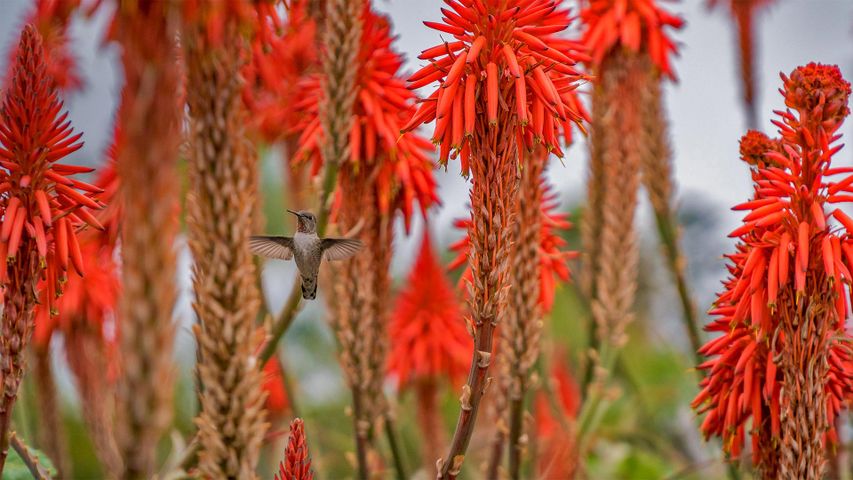A path winding through a forest of bluebells in Hertfordshire
© JayKay57/Getty Image
Bewitched by the fairy flower. Bluebells in Hertfordshire
For a few weeks every spring, beneath the woodland canopy, one of the most enchanting flowers begins to bloom. The bluebell is known by many names including ‘fairy flower’, bewitching walkers with its strong, sweet scent. In folklore, a blooming bluebell carpet indicates a mystical place where fairies live. They were said to hang their spells on the flowers to dry, which, if disturbed, unleashed magic. Children were warned that picking bluebells would cause them to be spirited away while adults were doomed to wander the woods and never escape. And for those unlucky few who heard the fairies ring the bluebells for their gatherings, it was a sign that death was imminent, a belief that inspired another name for bluebells: 'dead men's bells’.
The truth of the matter is that bluebells are considered toxic. Ancient fairy stories were a useful way to discourage people from handling them. But their beauty can be admired on woodland walks in the UK, which is home to about half of the world’s bluebell population. They are usually found in areas that have been woodland for more than 400 years, attracting bees, butterflies and hoverflies, not to mention admiring glances. This woodland wildflower spectacle is a sign spring is in full swing.
Related Images
Bing Today Images




 Little Pigeon River, Great Smoky Mountains National Park, Tennessee, United States
Little Pigeon River, Great Smoky Mountains National Park, Tennessee, United States
 Taktsang Palphug Monastery, Bhutan
Taktsang Palphug Monastery, Bhutan
 Kilchurn Castle reflecting in Loch Awe, Argyll and Bute, Scotland
Kilchurn Castle reflecting in Loch Awe, Argyll and Bute, Scotland
 Olive grove, Valle d'Itria, Puglia, Italy
Olive grove, Valle d'Itria, Puglia, Italy
 Red deer stag in Caledonian Forest, Glen Affric, Scottish Highlands
Red deer stag in Caledonian Forest, Glen Affric, Scottish Highlands
 Vancouver Coastal Sea wolves in Great Bear Rainforest, British Columbia, Canada
Vancouver Coastal Sea wolves in Great Bear Rainforest, British Columbia, Canada
 Madame Sherri Forest and the remnant of an old castle, New Hampshire, USA
Madame Sherri Forest and the remnant of an old castle, New Hampshire, USA
 Wooden path to Kennedy Lake, Vancouver Island, BC, Canada
Wooden path to Kennedy Lake, Vancouver Island, BC, Canada


